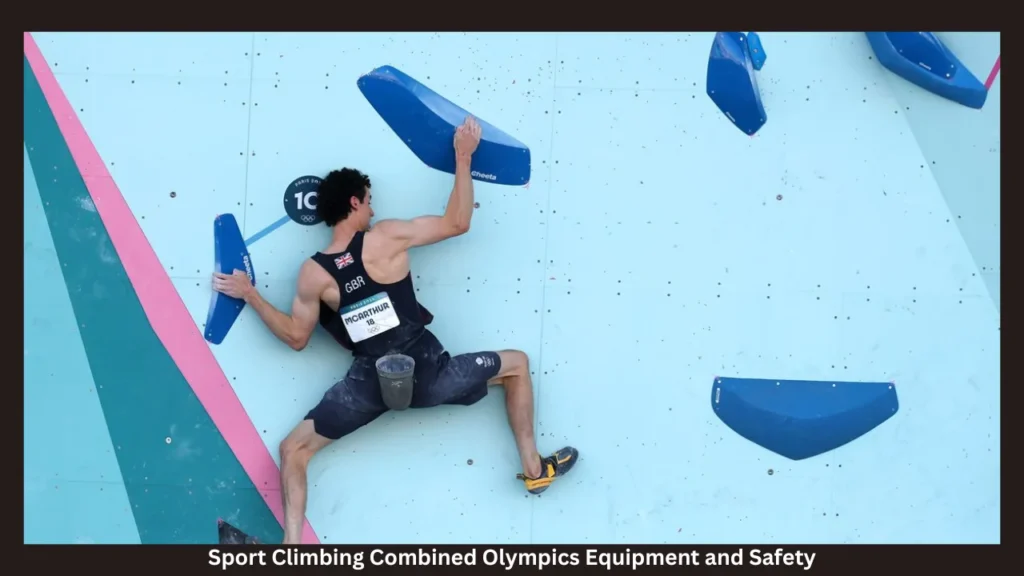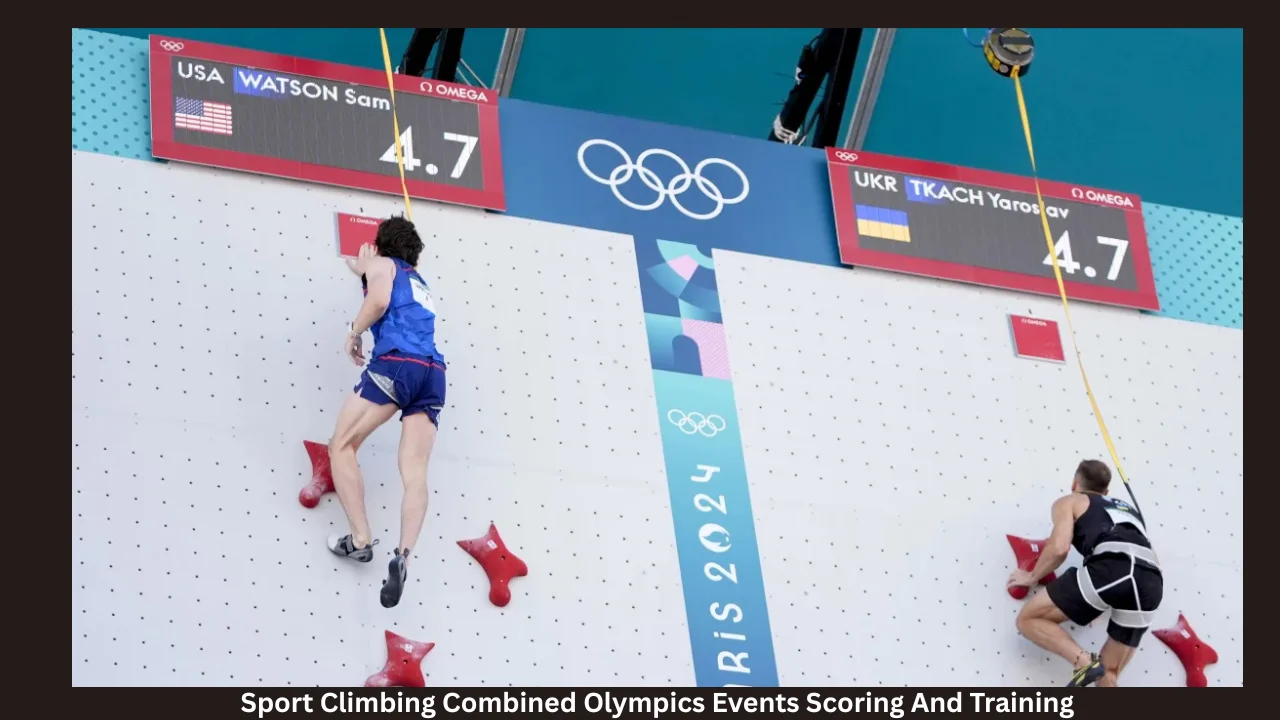The sport climbing combined Olympics is a unique and exciting event that blends three distinct climbing disciplines—speed, bouldering, and lead—into one thrilling competition. First introduced at the Tokyo 2020 Summer Olympics, this format challenges athletes to master explosive power, problem-solving skills, and endurance all in one go. Unlike traditional climbing competitions that focus on a single style, the combined event tests the all-around ability of each climber.
History of Sport Climbing at the Olympics
Sport climbing joined the Olympic program at Tokyo 2020 after years of growth on the World Cup circuit. Organizers first chose the combined format to limit venue space and medal counts. That early debut gave riders, runners, and gymnasts a fresh sport to watch, and many found themselves instant fans of the wall.
ALSO READ: Newsweek Wordle Hint Today Game Changer
A new scoring model created debate among climbers, yet it produced edge-of-the-seat drama on finals day. The sport climbing combined olympics concept soon became a talking point for future Games as officials looked to refine the format.
What Is the Combined Format?
The term “combined” means one athlete competes in all three climbing styles on the same day. Speed demands an all-out dash up a 15-meter wall. Bouldering challenges puzzle solving on short, risky problems. Lead tests endurance on a long, tricky route where every move matters.
Each segment rewards a different athletic trait. Together they crown the most complete climber. The sport climbing combined olympics setup pushes competitors to balance raw pace with steady technique and mental focus across styles.
ALSO READ: Ar15.Com Forum Customization And Support
Events Inside the Combined
Speed involves a fixed wall where time decides victory. Races last about six seconds for top men and seven for top women.
Bouldering offers four to five short climbs called “problems.” Climbers must solve them in limited tries.
Lead gives one long attempt up a tall route, and the highest hold wins.
Athletes transition quickly between events, which makes stamina and recovery vital. Coaches plan warm-ups so muscles stay fresh yet calm.
Scoring System Explained
Tokyo 2020 used a multiplication system: finishing places in each event were multiplied; the lowest product claimed gold. Paris 2024 changes to an addition model while dropping speed from the mix to create a speed-only medal and a boulder-plus-lead medal.
Even with tweaks, strategy stays key. A climber may push hard in bouldering to offset a weaker lead rank. Every placement point counts. The evolving system proves that the sport climbing combined olympics remains a living experiment, adjusting to feedback from athletes and fans.
Athlete Preparation and Training
Training programs now blend sprint drills, campus-board power moves, and long endurance sets. Coaches monitor finger strength, flexibility, and mental rehearsal. Nutrition focuses on light body weight without energy loss.
Climbers split weeks into style-specific sessions. Monday might be pure speed, Tuesday heavy boulder power, Wednesday recovery, and Thursday long lead laps. Cross-training such as yoga improves mobility, reducing injury risk in the busy sport climbing combined olympics season.
Sport Climbing Combined Olympics Equipment and Safety

Shoes differ across disciplines: stiff edges for speed, sensitive rubber for boulders, and supportive midsoles for lead. Athletes use chalk—liquid or powder—to dry hands, and many apply finger tape to protect skin splits.
Auto-belay devices catch falls in speed. Thick crash pads cushion boulder slips, while lead climbers depend on dynamic ropes and quickdraws. Officials inspect every bolt and panel because safety remains the top rule in the sport climbing combined olympics arena.
Notable Moments and Athletes
At Tokyo, Alberto Ginés López shocked favorites with steady performances, while Janja Garnbret dominated as expected, flashing boulder problems with flair. Their victories boosted climbing’s global profile.
New stars keep rising. Youth champions practice combined skills early, hoping to peak at Los Angeles 2028. Each cycle writes fresh stories that cement the sport climbing combined olympics as one of the Games’ must-watch events.
Future of the Combined Event
Paris introduces two medal events, and further splits may follow. Some propose separate finals for each discipline, mirroring track cycling’s varied races. Others like the hybrid test of all-round ability.
Venue design will evolve too, with modular walls that switch from speed to boulder holds within minutes. Advancing hold shapes and wall angles ensure routesetters create brand-new challenges for every sport climbing combined olympics tournament.
Frequently Asked Questions
Why is the sport climbing combined Olympics format different from regular competitions?
In most climbing events, athletes compete in one discipline—speed, bouldering, or lead. But the sport climbing combined Olympics format tests versatility by combining all three. It was introduced to fit within Olympic constraints on athlete numbers and medal events, offering a single gold medal for the most complete climber.
How do climbers prepare for all three disciplines?
Climbers follow a balanced training routine that includes speed drills, power workouts for bouldering, and endurance climbs for lead. Mental preparation, injury prevention, and recovery are also important. Athletes aiming for the sport climbing combined Olympics must be strong, smart, and fast—all at once.
Has the format changed since Tokyo 2020?
Yes. Tokyo 2020 used a combined format with all three disciplines and one medal. For Paris 2024, the format was updated. Speed climbing became a separate medal event, while bouldering and lead were merged into a new combined event. This made the sport climbing combined Olympics more balanced and fair for athletes with specific strengths.
Conclusion
The sport climbing combined olympics format turns vertical movement into a festival of skill, power, and nerves. Its blend of speed, puzzling boulders, and taxing lead routes crowns the most versatile climbers on earth. As scoring systems refine and fans grow, the event promises ever richer drama at future Games, inspiring new athletes to chalk up and aim high.
